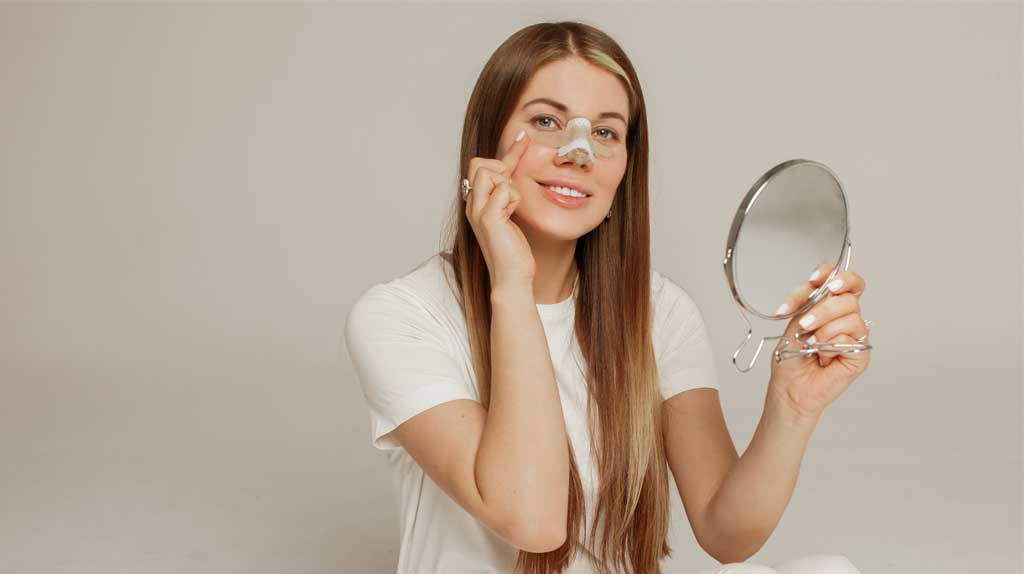
Open or Closed Rhinoplasty : what’s the difference ?
Too large, too humped, too droopy… the nose is one of those facial features that we immediately notice — and it can quickly become a source of discomfort. Considering a rhinoplasty often feels like a natural next step!
But as soon as you start researching this cosmetic surgical procedure, a crucial question arises: should you choose an open rhinoplasty or a closed rhinoplasty? Both techniques have existed for years, each with its advantages, limitations, and specific indications. Yet, their differences are not always clear to future patients. Here’s everything you need to know to help you see more clearly!
Understanding the difference between open and closed rhinoplasty
Rhinoplasty is a procedure that aims to modify the shape of the nose for aesthetic or functional reasons. Depending on the case, it may involve removing a hump, refining the tip, correcting a deviation, or restoring the overall balance of the face. This is where the type of nasal access — or surgical approach — becomes crucial.
In what is known as a closed rhinoplasty, all incisions are made inside the nostrils. The skin is not lifted, and the surgeon accesses the bone and cartilage structures through these internal openings. No visible stitches, no external scars.
Open rhinoplasty, on the other hand, requires an additional incision at the level of the columella, the small strip of skin located between the nostrils. This allows the skin of the nose to be gently lifted, fully exposing its framework. The surgeon then operates with full visibility over the corrections being made.
Why choose one over the other ?
The answer largely depends on the nose you want to correct and the result you are aiming for. Open rhinoplasty offers greater control during the procedure because the surgical field is completely exposed. The surgeon can more precisely correct asymmetries, finely reshape the tip, adjust the cartilage, or intervene on complex structures, which is often the case in secondary rhinoplasty (meaning after a previous operation).
It’s the preferred approach for so-called “complicated” noses or when aiming for a very refined remodeling. It also allows for better symmetry control, which is crucial for achieving a harmonious and natural result.
In short? With an open rhinoplasty, the surgeon sees everything! They can work with much greater precision.
Closed rhinoplasty, on the other hand, is ideal for simpler cases: removing a bump, slightly refining the bridge, or moderately correcting the bone structure. Since the skin is not lifted, the surgery is a bit shorter, and recovery is often faster. It’s a discreet technique that leaves the nose looking intact from the very first days.
But be careful: discreet does not mean easier for the surgeon. Closed rhinoplasty demands perfect knowledge of nasal anatomy and great precision, as visibility is more limited compared to open surgery.
What about the scar ?
It’s often the first concern when discussing open rhinoplasty. However, the scar on the columella is tiny, usually just a few millimeters long, and very discreet. In the vast majority of cases, it becomes virtually invisible after a few months. An untrained eye would never notice it!
There are, however, exceptions. Some individuals heal less well or develop persistent redness. That’s why this factor may influence the choice of technique.
A slightly different recovery process
In terms of recovery, the difference isn’t huge but is worth mentioning. After an open rhinoplasty, it’s common to see a bit more swelling, especially at the tip of the nose. Recovery may be slightly longer, with gradual deflating over several months.
Closed rhinoplasty generally results in less swelling and fewer bruises. The nose quickly regains a “socially presentable” appearance, even though — in both cases — the final result requires time. It usually takes between six months and a year for the nose to settle into its final shape.
The crucial role of the surgeon
Rather than trying to decide for yourself between open or closed rhinoplasty, the smartest move is to consult an experienced surgeon who masters both approaches. After analyzing your nose, skin, expectations, and facial morphology, the surgeon will guide you towards the most suitable technique.
Some clinics systematically favor open surgery, while others prefer closed surgery for aesthetic reasons. There’s no absolute truth, only specific indications. What matters is the quality of the preoperative analysis and adapting the technique to each individual face.
And if the surgery takes place abroad ?
Turkey has established itself in recent years as one of the top destinations for cosmetic surgery, especially for rhinoplasty. Surgeons there are numerous, often specialized, and the prices are much more affordable compared to other European countries.
This success also stems from the high level of practitioner training and the experience gained through a high volume of procedures. Foreign patients, coming from all over Europe and the Middle East, find high-quality care, serious follow-up, and results renowned for their natural look.
If you are considering a rhinoplasty in Turkey, take the time to thoroughly research the clinic, reviews, before/after photos, and the type of technique used. Some clinics specialize in closed rhinoplasty, others in the open approach.
Conclusion
Open or closed rhinoplasty: two techniques, two philosophies, but one shared goal — to reshape a nose in harmony with your face, while respecting your expectations. Far from being just a matter of scarring or recovery, the choice of method is based on anatomical, technical, and aesthetic criteria.
Ultimately, the best decision is the one made with a trusted professional, who can offer personalized guidance. Because more than the type of incision, it’s the surgeon’s precision and artistic eye that will make all the difference!

Dr. Levent Acar - Docteur